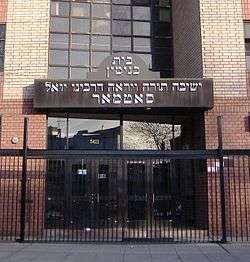Yeshiva
A yeshiva (/jəˈʃiːvə/; Hebrew: ישיבה, lit. 'sitting'; pl. ישיבות, yeshivot or yeshivos) is a Jewish educational institution that focuses on the study of traditional religious texts, primarily the Talmud and the Torah, and halacha (Jewish law). The studying is usually done through daily shiurim (lectures or classes) as well as in study pairs called chavrutas (Aramaic for 'friendship'[1] or 'companionship'[2]). Chavrusa-style learning is one of the unique features of the yeshiva.


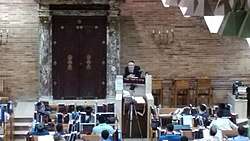
In the United States and Israel, the different levels of yeshiva education have different names. In the United States, elementary-school students are enrolled in a cheder, post-bar mitzvah-age students learn in a metivta, and undergraduate-level students learn in a beit midrash or yeshiva gedola (Hebrew: ישיבה גדולה, lit. 'large yeshiva' or 'great yeshiva'). In Israel, elementary-school students are enrolled in a Talmud Torah or cheder, post-bar mitzvah-age students learn in a yeshiva ketana (Hebrew: ישיבה קטנה, lit. 'small yeshiva' or 'minor yeshiva'), and high-school-age students learn in a yeshiva gedola.[3][4] A kollel is a yeshiva for married men. It is common for a kollel to pay a token stipend to its students. Students of Lithuanian and Hasidic yeshiva gedolas usually learn in yeshiva until they get married.
Historically, yeshivas were attended by males only. Today, all non-Orthodox and a few Modern Orthodox yeshivas are open to females. Although there are separate schools for Orthodox women and girls,[5] (midrasha or "seminary") these do not follow the same structure or curriculum as the traditional yeshiva for boys and men.
Etymology
Alternate spellings and names include yeshivah (/jəˈʃiːvɑː/; Hebrew: ישיבה, sitting (n.); metivta and mesivta (Aramaic: מתיבתא methivta); beth midrash; Talmudical academy, rabbinical academy and rabbinical school. The word yeshiva is applied to the activity of learning in class, and hence to a learning "session."[6]
The transference in meaning of the term from the learning session to the institution itself appears to have occurred by the time of the great Talmudic Academies in Babylonia, Sura and Pumbedita, which were known as shte ha-yeshivot (the two colleges).
History
Origins
The Mishnah tractate Megillah mentions the law that a town can only be called a "city" if it supports ten men (batlanim) to make up the required quorum for communal prayers. Likewise, every beth din ("house of judgement") was attended by a number of pupils up to three times the size of the court (Mishnah, tractate Sanhedrin). These might be indications of the historicity of the classical yeshiva. As indicated by the Talmud,[7] adults generally took off two months a year, Elul and Adar, the months preceding the pilgrimage festivals of Sukkot and Pesach, called Yarḥei Kalla (Aramaic for "Months of Kallah") to study. The rest of the year, they worked.
Geonic Period
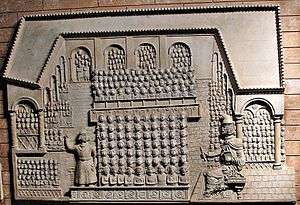
The Geonic period takes its name from Gaon, the title bestowed on the heads of the three yeshivas in existence from the third to the thirteenth century. The Geonim acted as the principals of their individual yeshivot, and as spiritual leaders and high judges for the wider communities tied to them. The yeshiva conducted all official business in the name of its Gaon, and all correspondence to or from the yeshiva was addressed directly to the Gaon.
Throughout the Geonic Period there were three yeshivot. These were named for the cities in which they were located: Jerusalem, Sura, and Pumbedita; the yeshiva of Jerusalem would later relocate to Cairo, and the yeshivot of Sura and Pumbedita to Baghdad, but retain their original names. Each Jewish community would associate itself with one of the three yeshivot; Jews living around the Mediterranean typically followed the yeshiva in Jerusalem, while those living in the Arabian Peninsula and modern-day Iraq and Iran typically followed one of the two yeshivot in Baghdad. There was however, no requirement for this, and each community could choose to associate with any of the yeshivot.
The yeshiva served as the highest educational institution for the Rabbis of this period. In addition to this, the yeshiva wielded immense power as the principal body for interpreting Jewish law. In this regard, the community saw the Gaon of a yeshiva as the highest judge on all matters of Jewish law. Each yeshiva ruled differently on matters of ritual and law; the other yeshivot accepted these divisions, and all three ranked as equally orthodox. The yeshiva also served as an administrative authority, in conjunction with local communities, by appointing members to serve as the head of local congregations. Those appointed as the head of a congregation would serve as a go-between for the local congregation and the larger yeshiva it was attached to. These local leaders would also submit questions to the yeshiva to obtain final rulings on issues of dogma, ritual, or law. Each congregation was expected to follow only one yeshiva to prevent conflict with different rulings issued by different yeshivot.
The yeshivot were financially supported through a number of means. There were fixed, but voluntary, yearly contributions made to the yeshivas; these annual contributions were collected and handled by the local leaders appointed by the yeshiva. Private gifts and donations from individuals were also common, especially during holidays, and could consist of money or goods.
The yeshiva of Jerusalem was finally forced into exile in Cairo in 1127, and eventually dispersed entirely. Likewise, the yeshivot of Sura and Pumbedita were dispersed following the Mongol invasions of the 13th century. After the scattering of the yeshiva, education in Jewish religious studies became the responsibility of individual synagogues. No organization ever came to replace the three great yeshivot of Jerusalem, Sura and Pumbedita.[8]
Post-Geonic Period to the 19th century
After the Geonic Period Jews went on to establishing more Yeshiva academies in Europe and in Northern Africa. One of these include the Kairuan yeshiva in Spain (Hebrew: ישיבת קאירואן) that was established by Chushiel Ben Elchanan (Hebrew: חושיאל בן אלחנן) in 974.[9]
Traditionally, every town rabbi had the right to maintain a number of full-time or part-time pupils in the town's beth midrash (study hall), which was usually adjacent to the synagogue. Their cost of living was covered by community taxation. After a number of years, the students who received semikhah (rabbinical ordination) would either take up a vacant rabbinical position elsewhere or join the workforce.
Lithuanian yeshivas
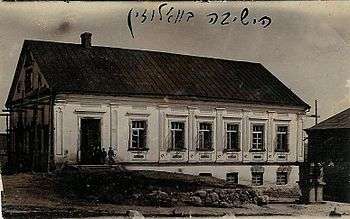
Organised Torah study was revolutionised by Chaim Volozhin, an influential 18th-century Lithuanian leader of Judaism and disciple of the Vilna Gaon. In his view, the traditional arrangement did not cater to those who were looking for more intensive study.
With the support of his teacher, Volozhin gathered many interested students and started a yeshiva in the town of Valozhyn, located in modern-day Belarus. The Volozhin yeshiva was closed some 60 years later in 1892 due to the Russian government's demands for the introduction of certain secular studies.[10] Thereafter, a number of yeshivot opened in other towns and cities, most notably Slabodka, Panevėžys, Mir, Brisk, and Telz. Many prominent contemporary yeshivot in the United States and Israel are continuations of these institutions, and often bear the same name.
In the 19th century, Israel Salanter initiated the Mussar movement in non-Hasidic Lithuanian Jewry, which sought to encourage yeshiva students and the wider community to spend regular times devoted to the study of Jewish ethical works. Concerned by the new social and religious changes of the Haskalah (the Jewish Enlightenment), and other emerging political ideologies (such as Zionism) that often opposed traditional Judaism, the masters of Mussar saw a need to augment Talmudic study with more personal works. These comprised earlier classic Jewish ethical texts (mussar literature), as well as a new literature for the movement. By focusing the student on self-understanding and introspection, often with profound psychological insight, the spiritual aims of Judaism could be internalized.[11] After early opposition, the Lithuanian yeshiva world saw the need for this new component in their curriculum, and set aside times for individual mussar study and mussar talks ("mussar shmues"). A mashgiach ruchani (spiritual mentor) encouraged the personal development of each student. To some degree, this Lithuanian movement arose in response, and as an alternative, to the separate mystical study of the Hasidic Judaism world. Hasidism began in the previous century within traditional Jewish life in Ukraine, and spread to Hungary, Poland and Russia. As the 19th Century brought upheavals and threats to traditional Judaism, the Mussar teachers saw the benefit of the new spiritual focus in Hasidism, and developed their alternative ethical approach to spirituality.
Some variety developed within Lithuanian yeshivas to methods of studying Talmud and mussar, for example whether the emphasis would be placed on beki'ut (breadth) or iyyun (depth). Pilpul, a type of in-depth analytical and casuistic argumentation popular from the 16th to 18th centuries that was traditionally reserved for the profound nuances of investigative Talmudic study, was not always given a place. The new analytical approach of the Brisker method, developed by Chaim Soloveitchik, has become widely popular; however, there are other approaches such as those of Mir, Chofetz Chaim, and Telz. In mussar, different schools developed, such as Slabodka and Novhardok, though today, a decline in devoted spiritual self-development from its earlier intensity has to some extent levelled out the differences.
Hasidic yeshivas
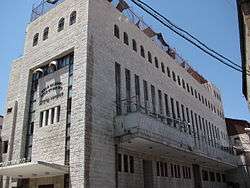
With the success of the yeshiva institution in Lithuanian Jewry, the Hasidic world developed their own yeshivas, in their areas of Eastern Europe. These comprised the traditional Jewish focus on Talmudic literature that is central to Rabbinic Judaism, augmented by study of Hasidic philosophy (Hasidism). Examples of these Hasidic yeshivas are the Chabad Lubavitch yeshiva system of Tomchei Temimim, founded by Sholom Dovber Schneersohn in Russia in 1897, and the Chachmei Lublin Yeshiva established in Poland in 1930 by Meir Shapiro, who is renowned in both Hasidic and Lithuanian Jewish circles for initiating the Daf Yomi daily cycle of Talmud study.
In many Hasidic yeshivas, study of Hasidic texts is a secondary activity, similar to the additional mussar curriculum in Lithuanian yeshivas. These paths see Hasidism as a means to the end of inspiring emotional devekut (spiritual attachment to God) and mystical enthusiasm. In this context, the personal pilgrimage of a Hasid to his Rebbe is a central feature of spiritual life, in order to awaken spiritual fervour. Often, such paths will reserve the Shabbat in the yeshiva for the sweeter teachings of the classic texts of Hasidism.
In contrast, Chabad and Breslov, in their different ways, place daily study of their dynasties' Hasidic texts in central focus; see below. Illustrative of this is Sholom Dovber Schneersohn's wish in establishing the Chabad yeshiva system, that the students should spend a part of the daily curriculum learning Chabad Hasidic texts "with pilpul". The idea to learn Hasidic mystical texts with similar logical profundity, derives from the unique approach in the works of the Rebbes of Chabad, initiated by its founder Schneur Zalman of Liadi, to systematically investigate and articulate the "Torah of the Baal Shem Tov" in intellectual forms. Further illustrative of this is the differentiation in Chabad thought (such as the "Tract on Ecstasy" by Dovber Schneuri) between general Hasidism's emphasis on emotional enthusiasm and the Chabad ideal of intellectually reserved ecstasy. In the Breslov movement, in contrast, the daily study of works from the imaginative, creative radicalism of Nachman of Breslov awakens the necessary soulfulness with which to approach other Jewish study and observance.
Sephardi yeshivas
- See: Category:Sephardic yeshivas, as well the more complete, קטגוריה:ישיבות ספרדיות
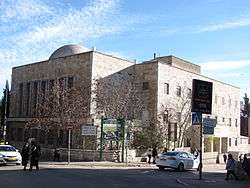
Although the yeshiva as an institution is in some ways a continuation of the Talmudic Academies in Babylonia, large scale educational institutions of this kind were not characteristic of the North African and Middle Eastern Sephardi Jewish world in pre-modern times: education typically took place in a more informal setting in the synagogue or in the entourage of a famous rabbi. In medieval Spain, and immediately following the expulsion in 1492, there were some schools which combined Jewish studies with sciences such as logic and astronomy, similar to the contemporary Islamic madrasas. In 19th-century Jerusalem, a college was typically an endowment for supporting ten adult scholars rather than an educational institution in the modern sense; towards the end of the century a school for orphans was founded providing for some rabbinic studies.[12] Early educational institutions on the European model were Midrash Bet Zilkha founded in 1870s Iraq and Porat Yosef Yeshiva founded in Jerusalem in 1914. Also notable is the Bet El yeshiva founded in 1737 in Jerusalem for advanced Kabbalistic studies. Later Sephardic yeshivot are usually on the model either of Porat Yosef or of the Ashkenazi institutions.
The Sephardic world has traditionally placed the study of Kabbalah (esoteric Jewish mysticism) in a more mainstream position than in the European Ashkenazi world. This difference of emphasis arose in reaction to the historical events of the Sabbatean heresy in the 17th Century, that suppressed widespread study of Kabbalah in Europe in favour of the strength of Rabbinic Talmudic study. In Eastern European Lithuanian life, Kabbalah was reserved for an intellectual elite, while the mystical revival of Hasidism articulated Kabbalistic theology through Hasidic thought. These factors did not affect the Sephardi Jewish world, which retained a wider connection to Kabbalah in its traditionally observant communities. With the establishment of Sephardi yeshivas in Israel after the immigration of the Arabic Jewish communities there, some Sephardi yeshivas incorporated study of more accessible Kabbalistic texts into their curriculum. Nonetheless, the European prescriptions to reserve advanced Kabbalistic study to mature and elite students also influence the choice of texts in such yeshivas.
19th century to present
Conservative movement yeshivas
In 1854, the Jewish Theological Seminary of Breslau was founded. It was headed by Zecharias Frankel, and was viewed as the first educational institution associated with "positive-historical Judaism", the predecessor of Conservative Judaism. In subsequent years, Conservative Judaism established a number of other institutions of higher learning (such as the Jewish Theological Seminary of America in New York City) that emulate the style of traditional yeshivas in significant ways. However, many do not officially refer to themselves as "yeshivas" (one exception is the Conservative Yeshiva in Jerusalem), and all are open to both women and men, who study in the same classrooms and follow the same curriculum. Students may study part-time, as in a kollel, or full-time, and they may study lishmah (for the sake of studying itself) or towards earning rabbinic ordination.
Nondenominational or mixed yeshivas
Non-denominational yeshivas and kollels with connections to Conservative Judaism include Yeshivat Hadar in New York, the leaders of whom include Rabbinical Assembly members Elie Kaunfer and Shai Held. The rabbinical school of the Academy for Jewish Religion in California (AJR-CA) is led by Conservative rabbi Mel Gottlieb. The faculty of the Academy for Jewish Religion in New York and of the Rabbinical School of Hebrew College in Newton Centre, Massachusetts also includes many Conservative rabbis. See also Institute of Traditional Judaism.
Additionally, Pluralistic Rabbinical Seminary, developed and led by Conservative and Reform rabbis, offers a two-year online rabbinical ordination program with a "post-denominational" rabbinical ordination.[13]
Reform and Reconstructionist seminaries
Hebrew Union College (HUC), affiliated with Reform Judaism, was founded in 1875 under the leadership of Isaac Mayer Wise in Cincinnati, Ohio. HUC later opened additional locations in New York, Los Angeles, and Jerusalem. It is a rabbinical seminary or college mostly geared for the training of rabbis and clergy specifically. Similarly, the Reconstructionist Rabbinical College of Reconstructionist Judaism, founded in Pennsylvania in 1968, functions to train its future clergy. Some Reform and Reconstructionist teachers also teach at non-denominational seminaries like the Academy for Jewish Religion in New York, the Academy for Jewish Religion in California, and the Rabbinical School of Hebrew College. In Europe, Reform Judaism trains rabbis at Leo Baeck College in London, UK and Abraham Geiger Kolleg in Potsdam, Germany. None of these institutions describes itself as a "yeshiva".
Contemporary Orthodox yeshivas
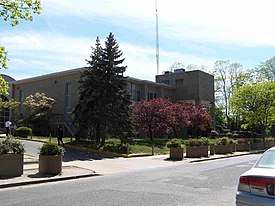
World War II and the Holocaust brought the yeshivot of Eastern and Central Europe to an end - however many scholars and rabbinic students who were able to escape the war, established yeshivot in a number of Western countries which had no or few yeshivot.[16] (The Yeshiva of Nitra was the last surviving in occupied Europe. Many students and faculty of the Mir Yeshiva were able to escape to Siberia, with the Yeshiva ultimately continuing to operate in Shanghai.)
From the mid-20th century [16] the greatest number of yeshivot, and the most important of them, was centered in Israel and in the United States; but they were also found in many other Western countries, e.g., Gateshead Yeshiva in England (one of the descendants of Novardok). The Chabad movement was especially active in this direction, [16] establishing yeshivot also in France, North Africa, Australia, and South Africa; this "network of institutions" is known as Tomchei Temimim.
As mentioned, many prominent contemporary yeshivot in the United States and Israel are continuations of European institutions, and often bear the same name.
Israel
- See: Category:Orthodox yeshivas in Israel, Category:Religious Zionist yeshivot.
Yeshivot in Israel have operated since Talmudic times.[17] Notable more recent examples include the Ari Ashkenazi Synagogue (since the mid 1500s); the Bet El yeshiva (operating since 1737); and Etz Chaim Yeshiva (since 1841). Various yeshivot were established in Israel in the early 20th century. Shaar Hashamayim was established in 1906, Hebron Yeshiva in 1924, Sfas Emes in 1925. After (and during) World War II, numerous other Haredi and Hasidic Yeshivot were re-established there by survivors. The Mir Yeshiva in Jerusalem - today the largest Yeshiva in the world - was established in 1944, by Rabbi Eliezer Yehuda Finkel who had traveled to Palestine to obtain visas for his students. Porat Yosef, the leading Sephardi Yeshiva, was founded in 1914; its predecessor, Yeshivat Ohel Moed was founded in 1904. From the 1940s and onward, especially following immigration of the Arabic Jewish communities, Sephardi leaders, such as Ovadia Yosef and Ben-Zion Meir Hai Uziel, established various yeshivot to facilitate Torah education for Sephardi and Mizrahi Jews (and alternative to Lithuanian yeshivot).
The Haredi community has grown with time - In 2016, 9% of Israel's population was Haredi, including Sephardic Haredim - supporting many yeshivot correspondingly (see Israel #Religion). Boys and girls here attend separate schools, and proceed to higher Torah study, in a yeshiva or seminary, respectively, starting anywhere between the ages of 13 and 18; see Chinuch Atzmai and Bais Yaakov. A significant proportion of young men then remain in yeshiva until their marriage; thereafter many continue their Torah studies in a kollel. (In 2006, there were 80,000 in full-time learning .[16]) Kollel studies usually focus on deep analysis of Talmud, and those Tractates not usually covered in the standard "undergraduate" program; see #Talmud study below. Some Kollels similarly focus on halacha in total, others specifically on those topics required for Semikha (Rabbinic ordination) or Dayanut (qualification as a Rabbinic Judge). The certification in question is often conferred by the Rosh Yeshiva.
Mercaz Harav, the foundational and leading Religious-Zionist yeshiva was established in 1924 by Ashkenazi Chief Rabbi Abraham Isaac Kook. Many in the Religious Zionist community today attend a Hesder yeshiva (discussed below) during their national service; these offer a kollel for Rabbinical students. (Students generally prepare for the Semikha test of the Chief Rabbinate of Israel; often for that of the posek R. Zalman Nechemia Goldberg.) Women correspondingly study in a Midrasha. High school students study at Mamlachti dati schools, often associated with Bnei Akiva. Bar Ilan University allows students to combine Yeshiva studies with university study; Jerusalem College of Technology similarly, which also offers a Haredi track; there are several colleges of education associated with Hesder and the Midrashot (these often offer specializations in Tanakh and Machshavah - see below). Training as a Dayan in this community is usually through Machon Ariel (Machon Harry Fischel), also founded by Rav Kook, or Kollel Eretz Hemda. See Religious Zionism #Educational institutions.
United States
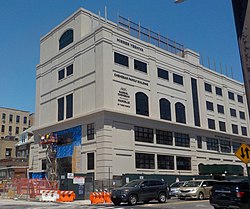
- See: Category:Orthodox yeshivas in the United States.
The first Orthodox yeshiva in the United States was Etz Chaim of New York (1886), modeled after Volozhin. It developed into the Rabbi Isaac Elchanan Theological Seminary (1896; "RIETS") and eventually Yeshiva University in 1945. It was established in the wake of the immigration of Central and Eastern European Jews (1880s - 1924). Mesivtha Tifereth Jerusalem, founded in 1907, was led by Rabbi Moshe Feinstein from the 1940s through 1986; Yeshiva Rabbi Chaim Berlin, est 1904, was headed by Rabbi Yitzchok Hutner from 1943 to 1980. Many Hasidic dynasties have their main Yeshivot in America, typically established in the 1940s; the Central Lubavitcher Yeshiva now has over 1000 students.
The postwar establishment of Ashkenazi yeshivot and kollelim parallels that in Israel; as does the educational pattern in the American Haredi community, although more obtain a secular education at the college level (see College credit below). Beth Medrash Govoha in Lakewood, New Jersey with 3,000 students in the early 2000s was founded in 1943 by R. Aaron Kotler on the "rigid Lithuanian model" that demanded full-time study;[16] it now offers a Bachelor of Talmudic Law degree which allows students to go on to graduate school.[18][16] Regarding junior and high school see Torah Umesorah. Many Haredi communities maintain their own community kollel.
Modern Orthodox often attend Yeshiva University, with many spending a year, often two, post-high school in a Hesder yeshiva or Midrasha. Semikha is usually through RIETS, although many study through Hesder, or other Yeshivot in Israel such as Yeshivat HaMivtar. Many communities host a Torah MiTzion kollel, where Hesder graduates learn and teach, generally for one year. There are numerous Modern Orthodox Jewish day schools, typically offering a beit midrash / metivta program, in parallel with the standard curriculum.
The US educational pattern is to be found around the Jewish world, with regional differences; see Category:Orthodox yeshivas in Europe and Category:Orthodox yeshivas by country.
Structure and features
| typical daily schedule |
The following is a typical daily schedule for Beit Midrash students in mainstream Lithuanian yeshivas:
This schedule is generally maintained Sunday through Thursday. On Thursday nights, there may be an extra long night seder, known as mishmar sometimes lasting beyond 1:00 am, and in some yeshivot even until the following sunrise. On Fridays, there is usually at least one seder in the morning, with unstructured learning schedules for the afternoon. Saturdays have a special Shabbat schedule which includes some sedarim but usually no shiur. |
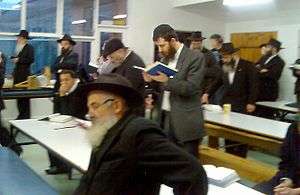
Yeshiva study is differentiated from, for example university study, as regards several structural features - curriculum aside. The year is structured into "zmanim"; the day is structured into "seders". The learning itself is delivered through a "shiur", a lecture with pre-specified sources, or "marei mekomot";[19][20] study in general, and particularly the preparation for shiur, takes place in "chavruta" or paired-study. This study is in a common venue called the bet midrash (Yiddish, "zal" i.e. "hall").
The institution is headed by its Rosh Yeshiva, while other senior Rabbis are referred to as "Ram" (Rosh Mesivta, Reish Metivta); the Mashgiach assumes responsibility for students' spiritual development (Mashpia, in Hasidic Yeshivot). A Kollel is headed by its Rosh Kollel, even when it is part of a Yeshiva. A sho'el umeishiv (lit. "ask and he answers") is usually available to consult to students on difficult points in their day's Talmudic studies. The Rabbi responsible for the (Talmud) shiur is known as a Maggid Shiur. Students are known as talmidim, sing. talmid. Rav Muvhak is sometimes used in reference to one's primary teacher; correspondingly, Talmid Muvhak may refer to a primary, or outstanding, student.
Academic year
In most yeshivot, the year is divided into three periods (terms) called zmanim (lit. times; sing. zman). Elul zman starts from the beginning of the Hebrew month of Elul and extends until the end of Yom Kippur. The six-weeks-long semester is the shortest yet most intense session, as it comes before the High Holidays of Rosh Hashanah and Yom Kippur. Winter zman starts after Sukkot and lasts until about two weeks before Passover, a duration of five months (six in a Jewish leap year). Summer zman starts after Passover and lasts until Rosh Chodesh Av or Tisha B'Av, a duration of about three months.
Chavruta-style learning
Yeshiva students prepare for and review the shiur (lecture) with their chavruta during a study session known as a seder.[2] In contrast to conventional classroom learning, in which a teacher lectures to the student and the student repeats the information back in tests, chavruta-style learning challenges the student to analyze and explain the material, point out the errors in his partner's reasoning, and question and sharpen each other's ideas, often arriving at entirely new insights of the meaning of the text.[1][21] A chavruta helps a student keep his mind focused on the learning, sharpen his reasoning powers, develop his thoughts into words, organize his thoughts into logical arguments, and understand another person's viewpoint.[22] The shiur-based system was innovated at the Telshe yeshiva, where there were five levels.
Chavruta-style learning tends to be loud and animated, as the study partners read the Talmudic text and the commentaries aloud to each other, and then analyze, question, debate, and even argue their points of view to arrive at an understanding of the text. In the heat of discussion, they may even wave their hands, pound the table, or shout at each other.[23] Depending on the size of the yeshiva, dozens or even hundreds of pairs of chavrutas can be heard discussing and debating each other's viewpoints.[24] One of the skills of chavruta-style learning is the ability to block out all other discussions in the study hall and focus on one's chavruta alone.[2]
Types of yeshivot
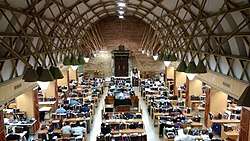
- Yeshiva Ketana (junior yeshiva) - Many Haredi (non-Hasidic and Hasidic) yeshivot ketanot in Israel, and some (primarily Hasidic) in the Diaspora, do not have a secular course of studies, with all students learning Judaic Torah studies full-time.
- Yeshiva High School - Also called Mesivta or Mechina or Yeshiva Ketana, or in Israel, Yeshiva Tichonit,[25] combines the intensive Jewish religious education with a secular high school education. The dual curriculum was pioneered by the Manhattan Talmudical Academy of Yeshiva University (now known as Marsha Stern Talmudical Academy) in 1916; ALMA was established in Jerusalem in 1936, and "ha-Yishuv" in Tel Aviv in 1937.
- Mechina - For Israeli high-school graduates who wish to study for one year before entering the army. In Telshe yeshivas and in Ner Yisroel of Baltimore, the Mesivtas/Yeshiva ketanas are known as Mechinas.
- Beth midrash - For high school graduates, and is attended from one year to many years, dependent on the career plans and affiliation of the student.
- Yeshivat Hesder - Yeshiva that has an arrangement with the Israel Defense Forces by which the students enlist together in the same unit and, as much as is possible serve in the same unit in the army. Over a period of about 5 years there will be a period of service starting in the second year of about 16 months. There are different variations. The rest of the time will be spent in compulsory study in the yeshiva. The first was Yeshivat Kerem B'Yavneh, established in 1954; the largest is the Hesder Yeshiva of Sderot with over 800 students.
- Kollel - Yeshiva for married men. The kollel idea has its intellectual roots in the Torah; Mishnah tractate Megillah mentions the law that a town can only be called a "city" if it supports ten men (batlanim) to make up the required quorum for communal learning. However, it is mostly a modern innovation of 19th-century Europe. A kollel will often be in the same location as the yeshiva.
- Baal Teshuva yeshivot catering to the needs of the newly Orthodox.
Post-high schools for women are generally called "seminary" or midrasha in Israel , and not yeshiva. (Although there are exceptions such as Prospect Park Yeshiva.) The Haredi Bais Yaakov system was started in 1918 under the guidance of Sarah Schenirer. These institutions provide girls with a Torah education, using a curriculum that skews more toward practical halakha (Jewish law) and the study of Tanakh, rather than Talmud. The curriculum at Religious Zionist and Modern Orthodox midrashot, however, often includes some study of Talmud: often Mishnah, sometimes Gemara; in further distinction, curricula generally entail Chavruta-based study of the texts of Jewish philosophy, and likewise Tanakh is studied with commentaries. See Midrasha #Structure for further discussion.
Languages
Classes in most Lithuanian and Hasidic yeshivot (throughout the world) are taught in Yiddish; Kol Torah, est 1939 in Jerusalem and headed by Shlomo Zalman Auerbach for over 40 years, was the first mainstream Haredi yeshiva to teach in Hebrew, as opposed to Yiddish. Sephardi, Modern Orthodox, Zionist, and baal teshuvah yeshivot use Modern Hebrew or the local language.
Students learn with each other in whatever language they are most proficient, with Hasidic students usually learning in Yiddish, Israeli Lithuanian students in Hebrew, and American Lithuanian students in English.
College credit
Although often not encouraged, some yeshivas permit students to attend college on a limited basis. This concession is facilitated by arrangements for the student to receive credit towards a college degree.[26] Yeshiva University in New York provides a year's worth of credit for yeshiva studies.[27] Haredi institutions with similar arrangements in place include Lander College for Men, Yeshivas Ner Yisroel and Hebrew Theological College.
Some American yeshivot in fact award the degrees Bachelor of Talmudic Law (4 years cumulative study), Master of Rabbinic Studies / Master of Talmudic Law (six years), and (at Ner Yisroel) the Doctorate in Talmudic Law (10 years). These degrees are nationally accredited by the Association of Advanced Rabbinical and Talmudic Schools, and may then grant access to graduate programs such as law school.
For historical context see: Hildesheimer Rabbinical Seminary; Volozhin yeshiva #History; Telshe Yeshiva #History; Yitzchok Hutner #Rabbinic and teaching career; Mesivta #Modern-day concept.
Curriculum
Torah study at an Orthodox yeshiva comprises the study of rabbinic literature, principally the Talmud, along with the study of halacha (Jewish law); Musar and Hasidic philosophy are often studied also.[11] In some institutions, classical Jewish philosophy or Kabbalah are formally studied, or the works of individual thinkers (such as Abraham Isaac Kook).
Non-Orthodox institutions offer a synthesis of traditional and critical methods, allowing Jewish texts and tradition to encounter social change and modern scholarship. The curriculum focuses on classical Jewish subjects, including Talmud, Tanakh, Midrash, halacha, and Philosophy, with an openness to modern scholarship. Note that, often, in these institutions less emphasis is placed on Talmud and Jewish law, "but rather on sociology, cultural studies, and modern Jewish philosophy".[28] (These institutions' focus is also on "the other functions of a modern rabbi such as preaching, counselling, and pastoral work". [29]) Conservative programs occupy a position midway.[28]
Talmud study
- See also: Talmud #Commentaries; Gemara; Mishnah
In the typical Orthodox yeshiva, the main emphasis is on Talmud study and analysis, or Gemara. Generally, two parallel Talmud streams are covered during a zman (trimester). The first is iyyun (in-depth study), often confined to selected legally focused tractates with an emphasis on analytical skills and close reference to the classical commentators;[20] the second, beki'ut, seeks to cover ground more speedily in order to build general knowledge of the Talmud.
In the yeshiva system of Talmudic study, the undergraduate yeshivot focus on eight mesechtohs (tractates) that deal with civil jurisprudence (Nezikin); through them, the student can best master the proper technique of Talmudic analysis. After this technique is mastered, the student is ready to go on to other areas of the Talmud[11] (see, for example, Yeshivas Ner Yisroel #Cycle of Masechtos ). Tractates Berachot, Sukkah, Pesachim and Shabbat are often included.
Works initially studied to clarify the Talmudic text are the commentary by Rashi, and Tosafot, a parallel analysis and critique. The integration of Talmud, Rashi and Tosafot, is considered as foundational - and prerequisite - to further analysis (in fact, this combination is sometimes referred to by its own acronym, "gefet" גפ״ת - Gemara, perush Rashi, Tosafot). The super-commentaries by "Maharshal", "Maharam" and "Maharsha" address the three together.
At more advanced levels, additional mefarshim (commentators) are studied: other rishonim, from the 11th to 14th centuries, as well as acharonim, from later generations. (There are two main schools of rishonim, from France and from Spain, who will hold different interpretations and understandings of the Talmud.) At these levels, students link the Talmudic discussion to codified law - particularly Mishneh Torah (i.e. Rambam), Arba'ah Turim and Shulchan Aruch - by studying, also, the halakha-focused commentaries of "Rosh", "Rif" and "Mordechai".
In general, as the level of the shiur progresses, so the student must integrate more of these commentaries into their analysis of the sugya (loosely, Talmudic "unit of analysis"); and understand their various implications re practical-halakha. At the higher levels, in Lithuanian influenced Yeshivot, the "Brisker method" of analysis is often employed, as mentioned. Some yeshivot - such as Birkat Moshe - particularly emphasize the Rambam, analyzing the sugya in light of the Mishneh Torah and its numerous commentaries.
The Rosh Yeshiva delivers a weekly shiur klali (comprehensive lecture), which sums up the week's learning; this is attended by all levels.
Typically, boys begin their study of Talmud in middle school, initially studying Mishnah, the component of Talmud where the underlying "cases" are presented. (At this stage, they have completed their survey of Chumash, with these cases expanding on the legal precepts there; see below.) In early high school, gemara, the analytic component, is introduced; by late high school some are able to work with Tosafot. Some systems more closely follow Pirkei Avot 5:21 as a guideline; where Mishna-study begins at age 10, and Gemara at 15.
Jewish law
Generally, a period is devoted to the study of practical halakha. The text most commonly studied in Ashkenazi yeshivot is the Mishnah Berurah, a commentary on the Shulchan Aruch originally published between 1884-1907. In Sephardic yeshivot, the Shulchan Aruch itself is more commonly studied, along with the Bet Yosef commentary; the Yalkut Yosef and Kaf Hachaim are also often studied, while Ben Ish Hai is a standard reference. In Chabad yeshivot,[30] emphasis is placed upon study of Shulchan Aruch HaRav. Beginning students are encouraged to also work through the Kitzur Shulchan Aruch, so as to survey all areas of applicable halacha. Other students, similarly, additionally review the Mishneh Torah through its daily study cycle (this is often outside of any seder), here including halachot relating to, for example, the Temple.
Students in Semikha (Rabbinic ordination) programs, and often those in kollel, devote the largest portion of their schedule to halakha. The focus is on in-depth, source-based[19] study of those areas where (community) Rabbis will typically be asked "shaylas" (halachic questions); the testing[30][31][32] invariably covers Kashrut (referred to as "Issur v'Heter"), usually Shabbat, often Niddah, sometimes Avelut (mourning) and/or marriage. This analysis encompasses the discussion of the halakha in the Arba'ah Turim and Beit Yosef, through its final presentation in the Shulchan Aruch, complemented by a study of key She'elot u-Teshuvot (responsa), recent and historical. The analysis assumes a deep knowledge of all relevant Talmudic sugyas, which are studied accordingly within the schedule. Students in an Orthodox Semikha program will thus have a strong background in Talmud, typically having spent at least four preceding years in Yeshiva;[31] Kollel students likewise. (See Rabbi #Orthodox and Modern Orthodox Judaism, Posek #Formulating a ruling (psak din).) During the morning seder, Semikha students continue their Talmud studies, learning the same masechet as the rest of the Yeshiva.
Ethics, mysticism and philosophy
Haredi Yeshivot typically devote a seder to mussar (ethics and character development). The preeminent text studied is the Mesillat Yesharim ("Path [of the] Just") of Moshe Chaim Luzzatto. Other works of mussar literature studied include:
- Orchot Tzaddikim ("Paths [of the] Righteous"); its authorship and time of writing is uncertain, but as it quotes Maimonides, it was written some time after his works were disseminated.
- Chovot ha-Levavot ("Duties of the Hearts") by Bahya ibn Paquda.
- Ma'alot ha-Middot ("Benefit [of good character] traits") by Jehiel Anav
- Mishnat R' Aharon, Mussar Lectures on many topics by Aharon Kotler.
- Mikhtav me-Eliyahu, the works of Eliyahu Eliezer Dessler.
- Tomer Devorah by Moses Cordovero.
As above, these sessions focus the student on self-understanding and introspection, internalizing the spiritual aims of Judaism, and developing the character-traits, or middos, appropriately. Topics in applied Jewish ethics, such as the "laws of speech", are often studied separately.
Hasidic yeshivot study the mystical, spiritual works of Hasidic philosophy (Chassidus). This draws on the earlier esoteric theology of Kabbalah, but articulates it in terms of inner psychological awareness and personal analogies. This makes Jewish mysticism accessible and tangible, so that it inspires emotional dveikus (cleaving to God) and spiritual contribution to daily Jewish life. This serves some similar purposes to mussar, but through different means and with different contributions to intellectual and emotional life. Chabad yeshivot, for example, study the Tanya, the Likutei Torah, and the voluminous works of the Rebbes of Chabad for an hour and a half each morning, before prayers, and an hour and a half in the evening. See above.
As mentioned, Sephardi yeshivot often incorporate study of selected Kabbalistic texts into their curriculum - standard texts, as well as works by Yosef Hayyim, Yehuda Fatiyah and Yaakov Chaim Sofer. Kabbalistic sources are brought in halachik works such as Kaf Hachaim and Ben Ish Hai - see Sephardic law and customs #Lurianic Kabbalah - and are then studied indirectly also.
In Hesder, Religious Zionist and Modern Orthodox yeshivot, Machshava (Jewish philosophy generalized / applied as "Jewish thought"; also Hashkafa, "worldview") is taught formally, [33] with classes systematically covering the major topics and works (Kuzari, Moreh Nevukhim, Sefer ha-Ikkarim , Emunot ve-Deot, Derech Hashem, Nefesh Ha-Chaim and others). Hesder yeshivot additionally devote specific time to the writings of Abraham Isaac Kook, "Rav Kook", who articulated a unique personal blend of mysticism, creative exegesis and philosophy (as well as to Torat Eretz Yisrael generally). The Modern Orthodox, similarly, study the works of Joseph B. Soloveitchik, "Rav Soloveitchik". Hasidic philosophy and Mussar are also often taught; Maharal may have a dedicated shiur. Machshava is also a focus-area of many Midrashot.
Some Haredi and Hasidic yeshivas also include formal study of Hashkafa, especially at ba'al teshuva focused yeshivas; many Semikha programs likewise, particularly those with an outreach, or kiruv, component. Regardless, students here typically study the major works independent of a shiur.
Torah and Bible study
Intensive study of Chumash (Torah) with the commentary of Rashi is stressed and taught in all elementary grades.[11] In Haredi and Hasidic yeshivas, this is often done with Yiddish translations. The rest of the Tanakh (Hebrew Bible) is usually taught through high school, although less intensively.
In Yeshivot, thereafter, Chumash and Nach are studied less directly. Yeshiva students typically follow the practice of Shnayim mikra ve-echad targum, independently studying the upcoming parashah (weekly Torah portion) twice in the original Hebrew and once in Targum Onkelos (an Aramaic translation), with Rashi's commentary. Students often also study Ramban's commentary, and, less often, other commentaries from the Mikraot Gedolot edition are reviewed. Students may similarly study the Tanakh independently, but it is not taught per se; exceptions are the five Megilloth and Tehillim. The Rosh Yeshiva usually delivers a weekly shiur on the parashah, which is often open to the public.
By contrast, in Hesder and Modern Orthodox yeshivot, the study of Chumash and Nach continues in parallel with Talmud study. These institutions offer formal shiurim in many, if not all, of the books of Nevi'im and Ketuvim. These are often structured by level, similar to Talmud study, where the text is then analyzed in light of the various commentaries and Midrashim, typically complementing the Machshavah shiurim. More recent commentaries especially studied are "Netziv" and "Malbim"; as well as reference works such as Da'at Miqra by Mordechai Breuer and others. The commentaries by Ramban and "Rav Hirsch" provide much philosophical content. Intensive study of Tanakh, as for Machshava, is similarly a feature of many Midrashot.
References
- Liebersohn, Aharon (2009). World Wide Agora. p. 155. ISBN 9781409284772.
- Forta, Arye (1989). Judaism. Heinemann Educational. p. 89. ISBN 0-435-30321-X.
- Berezovsky, Rabbi Sholom Noach (2001). נתיבות שלום [Nesivos Sholom]. Feldheim Publishers. p. 211. ISBN 9781583304952.
- Kramer, Doniel Zvi (1984). The Day Schools and Torah Umesorah: The Seeding of Traditional Judaism in America. Yeshiva University Press. p. xiv.
- "Sarah Schenirer a"h, the Mother of the Bais Yaakov Movement, On Her Yahrtzeit, Today, 26 Adar". matzav.com. 2013-03-08. Retrieved 2018-10-06.
- "Session", in fact, similarly derives from the Latin sedere, "to sit."
- (Where in the Talmud, and in which Talmud (Bavli or Yerushalmi?)
- Goitein, S.D. (1999). Lassner, Jacob (ed.). A Mediterranean Society: An Abridgement in One Volume. Berkeley: University of California Press. ISBN 9780520240599. Retrieved 2018-10-06.
- מרדכי וורמברנד ובצלאל ס. רות, עם ישראל - תולדות 4000 שנה - מימי האבות ועד חוזה השלו
- Schacter, Jacob J. (1990). "Haskalah, Secular Studies and the Close of the Yeshiva in Volozhin in 1892". The Torah U-Madda Journal. 2: 76–133. JSTOR 40914771.
- Krakowski, Moshe (26 December 2018). "What Yeshiva Kids Are Actually Studying All Day". Forward. Retrieved 22 January 2020.
- Elazar, Daniel J. "Can Sephardic Judaism be Reconstructed?". Jerusalem Center for Public Affairs. Retrieved 2018-10-06.
- "Pluralistic Rabbinical Seminary". PRS. January 23, 2019. Retrieved February 14, 2019.
- Steve Strunsky (April 16, 2019). "Lakewood yeshiva looks to use old golf course for new campus". New Jersey On-Line LLC. Retrieved April 16, 2019.
Beth Medrash Gohova is said to be the world’s largest Jewish-affiliated university outside of Israel.
- Stephen Stirling. "10 ways Lakewood is unlike anywhere else in N.J." NJ Advance Media. Retrieved April 16, 2019.
The sea change can be pinned to one event: The founding of the Beth Medrash Govoha yeshiva in the mid-20th century. The Orthodox Jewish community has set down roots en masse around the religious school, which is now the largest yeshiva in North America.
- "Yeshiva", jewishvirtuallibrary.org
- See e.g. Brachot 18b
- beth-medrash-govoha on chea.org
- Example marei mekomot - Halacha
- Example marei mekomot - Gemara
- "Bringing the People Together". Reb Jeff. 24 February 2011. Retrieved 23 June 2011.
- Zobin, Zvi (1996). Breakthrough to Learning Gemora: A Concise, Analytical Guide. Kest-Lebovits. pp. 104–106.
- Neusner, Jacob; Avery-Peck, Alan J. (2001). The Blackwell Reader in Judaism. Blackwell Publishers. p. 422. ISBN 0-631-20738-4.
- Finkel, Avraham Yaakov (1999). Ein Yaakov: The Ethical and Inspirational Teachings of the Talmud. Jason Aronson. p. xxix. ISBN 0-7657-6082-7.
- See the Hebrew Wikipedia's ישיבה תיכונית.
- "Guide To Degree Completion Programs for Yeshiva Students". YeshivaDegree.com. 2011. Archived from the original on 2012-04-02. Retrieved 2018-10-06.
- S. Daniel Abraham Israel Program
- Rabbi Steven Blane (N.D.). "Ordination and Semicha", jsli.net
- Ordination (Semicha), myjewishlearning.com
- CATALOG, Rabbinical College of America
- Semicha Standards, RCA Executive Committee, 2015.
- smicha.co.il - resource for the Semikha of the Chief Rabbinate of Israel, maintained by Rabbi Harel Shapira
- See for example these Topics in Hashkafa at Har Etzion



